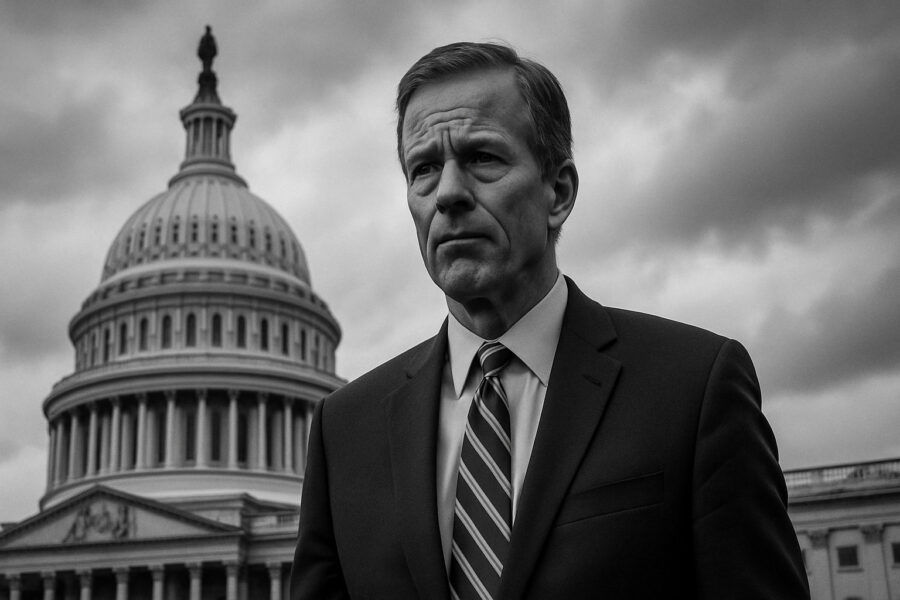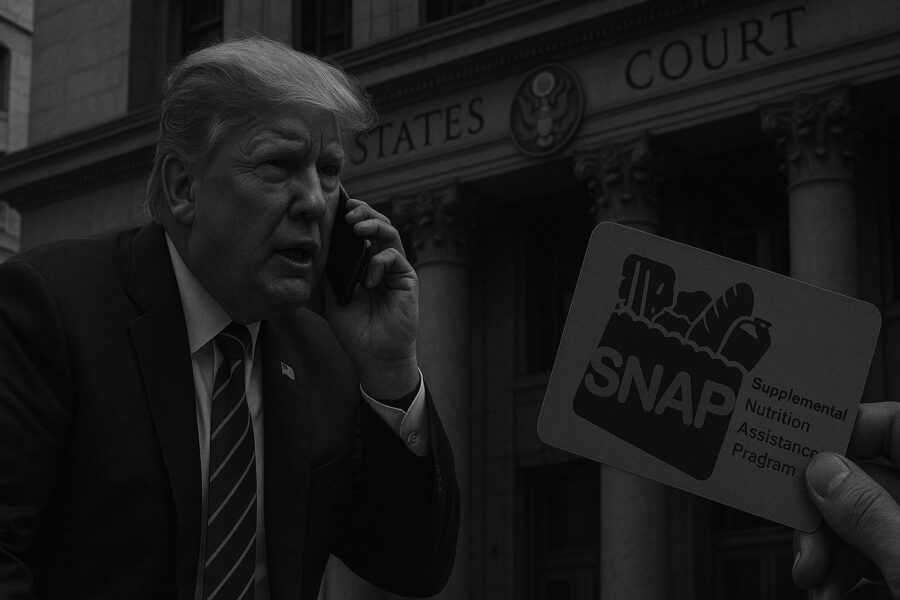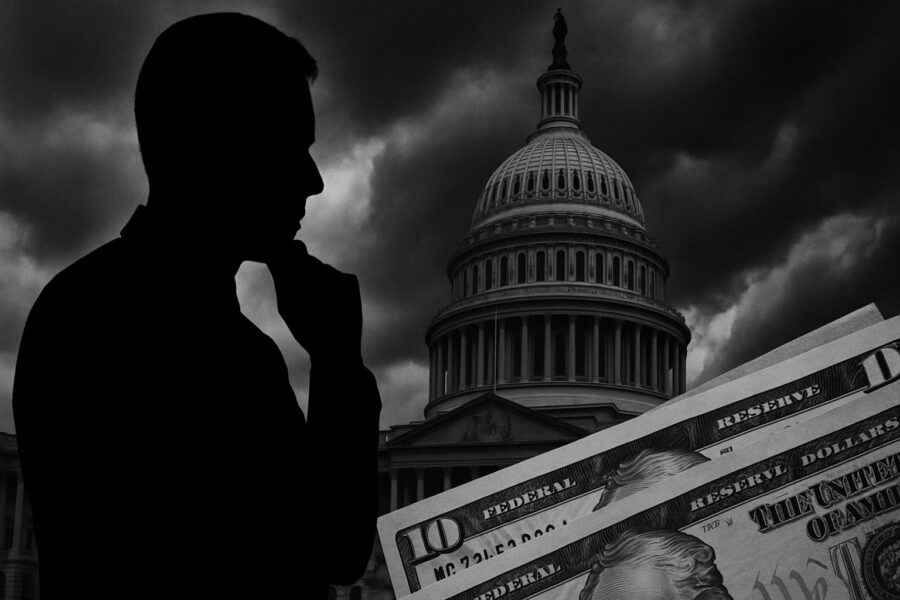Want Instant Updates? Follow us on Google News (here)
Want Instant Updates? Follow us on Google News (here)

Who’s Responsible for the 2025 U.S. Government Shutdown?
The 2025 shutdown in a nutshell
On Oct. 1, 2025, the United States entered its longest government shutdown in history—just one day short of the 2018‑2019 record of 35 days—after Congress failed to agree on funding for the 2026 fiscal year[8]. The shutdown has lasted 32 days (as of Nov. 1) and is expected to close the government on Nov. 21, 2025 unless a bipartisan deal is struck.
| What’s shut down | Impact (as of Nov. 1) |
|---|---|
| Federal agencies | 70% of the 2.2 million federal workforce furloughed; 730,000 workers continue to work without pay[26] |
| Food‑stamps (SNAP) | 42 million people at risk of losing benefits; federal courts ordered emergency funding to keep some benefits running[26] |
| Social services | Child‑care, veteran benefits, and federal grant programs delayed or paused[25] |
| Economic output | CBO estimates a 1 percentage‑point drop in GDP after 4 weeks; permanent loss of up to $14 billion if the shutdown reaches 8 weeks[26] |
The political backdrop: Why did the funding bill fail?
Congressional budget negotiations
- House: A House‑passed resolution to extend funding through Nov. 21, 2025 was tabled in the Senate.
- Senate: The resolution failed to clear the filibuster; 53 Republicans, 45 Democrats, and 2 independents (caucusing with Democrats) were present. The Senate requires 60 votes to end a filibuster, but only 55 were in favor of the bill[25].
- Key sticking points:
- Health‑care subsidies: Democrats demanded the extension of ACA tax credits; Republicans refused.
- Medicaid cuts: Republicans defended cuts enacted in the 2024 budget; Democrats opposed them.
- Defense & foreign aid: Both sides disagreed on levels of spending for defense and foreign assistance.
The filibuster and the “nuclear option”
President Trump repeatedly urged Senate Republicans to “invoke the nuclear option” to eliminate the filibuster, arguing that it was a roadblock to reopening the government[23]. Senate Majority Leader John Thune has rejected this, insisting that the filibuster remains the rule until a bipartisan agreement is reached[31].
Presidential influence
The Trump administration actively pressured Republican senators to support the continuation of the shutdown in exchange for concessions on future policy. President Trump and Vice‑President JD Vance publicly decried the shutdown and called for a “quick” resolution, but also threatened to push for a “nuclear option” and for the use of the federal contingency fund to keep programs like SNAP running[1].
External events
- COVID‑19‑era policy fatigue: Congress had recently passed a “full‑year” appropriations package in 2024 that included pandemic‑era spending cuts, further polarizing fiscal priorities.
- 2026 election cycle: Both parties saw the shutdown as a political bargaining chip, with Democrats hoping to rally voters on health‑care and Republicans fearing backlash for refusing to fund the government.
Public perception: Who do people blame?
Two major polls highlight how Americans assign blame:
| Poll | Key findings |
|---|---|
| AP‑NORC(Oct. 16) | 60 % of respondents blamed Trump and Republicans; 54 % blamed Democrats, and at least 75 % gave each side a “moderate” share of responsibility[28]. |
| Ipsoc‑Norc(Oct. 30) | 6 in 10 Americans said Trump and Republicans had a “great deal” or “quite a bit” of responsibility; 54 % felt the same about Democrats[27]. |
The polling data illustrate that no single party is being absolved—the public recognizes a shared responsibility. The responsibility is being framed as a “messaging battle” in which each side tries to score political points while the shutdown continues.
Economic fallout
| Sector | Cost |
|---|---|
| Unpaid federal workers’ reduced spending | $400 million per day (≈ $12 billion over 30 days)[26] |
| SNAP funding pause | $9.2 billion to keep November benefits flowing, but the department’s contingency fund only holds ~$5 billion[26] |
| Permanent GDP loss | $7 billion after 4 weeks; $11 billion after 6 weeks; $14 billion after 8 weeks[26] |
These numbers show that the economic damage is largely due to the inability of Congress to reach a compromise, not to any single policy proposal.
Who actually has the power to end the shutdown?
| Actor | Power to close the government | Key actions so far |
|---|---|---|
| Senate Republicans | Need 55 votes in the presence of all 100 senators (filibuster). | Thune has repeatedly called for bipartisan talks, but has not waived the filibuster until a deal is reached[31]. |
| Senate Democrats | Need 60 votes to end the filibuster; can hold out for policy concessions. | Several Democrats have voted with Republicans in the resolution, but many continue to oppose it until ACA subsidies are extended[31]. |
| President Trump | Can use presidential influence to press Republicans; can call for emergency funding; can push for the nuclear option. | Trump has urged a “nuclear option” and threatened to use contingency funds for SNAP, but has not formally invoked the rule. |
| Judiciary | Can enforce use of contingency funds, prevent firing of employees, and order temporary measures. | A federal judge in Massachusetts barred the administration from firing employees and ordered the Agriculture Department to continue SNAP payments using a contingency fund[26]. |
The “off‑ramp” proposal and possible resolutions
Senate Democrats, led by Senators Michael Bennet (D‑Colo.) and Dick Durbin (D‑Ill.), have been negotiating a “clean continuing resolution” that would:
- Reopen the government by funding the 2026 fiscal year.
- Grant a vote on ACA subsidies after reopening, potentially giving Democrats leverage.
- Keep the filibuster rule in place but move towards a more pragmatic “off‑ramp” that can be passed with the current Republican majority[31].
The GOP has, however, rejected specific healthcare concessions while the government remains closed[31]. A compromise would require at least five Democrats (or the two independents) to shift their votes in favor of the continuing resolution. The Biden administration’s stance has been largely absent; Trump’s administration has been the active political player.
The takeaway: Responsibility is shared
- Legislative gridlock: The Senate’s failure to clear a House‑passed continuing resolution, mainly due to the filibuster and conflicting fiscal priorities, is the immediate structural cause.
- Presidential pressure: Trump’s public advocacy for a “quick” resolution, coupled with his push to eliminate the filibuster, has intensified partisan bargaining.
- Party positions:
- Republicans: Focus on keeping spending lower, protecting the filibuster, and securing policy concessions.
- Democrats: Demand health‑care subsidies, oppose Medicaid cuts, and seek to use the shutdown as a political rallying point.
Thus, the shutdown is the result of a combination of partisan fiscal disagreement, procedural rules (the filibuster), presidential pressure, and broader political calculations. Assigning responsibility to a single party or individual oversimplifies a complex, institutional stalemate.
What can happen next?
- Bipartisan “off‑ramp” – a compromise continuing resolution that preserves funding while offering a future vote on ACA subsidies (the most likely path discussed in Senate talks).
- Nuclear option – Republicans could agree to a filibuster waiver, allowing the Senate to pass a shutdown‑ending resolution with 60 votes.
- Judicial intervention – Continued use of contingency funds to keep essential programs (SNAP, Medicare) running until Congress acts.
- Full‑year appropriations – A new, year‑long appropriations bill that might include higher spending levels, potentially costing taxpayers more.
Until any of these options are enacted, the shutdown will continue to exact economic and human costs, further eroding public trust in government institutions[32].
Final thoughts
The 2025 U.S. government shutdown is not the product of a single actor’s mistake or misjudgment. It is the outcome of deeply entrenched partisan divisions over fiscal priorities, procedural rules that block compromise, and the political calculus of both parties during a high‑stakes election cycle. Responsibility is distributed: Republicans for their refusal to fund the government without concessions, Democrats for their insistence on subsidies and Medicaid protections, and the President for pushing the standoff to serve policy goals.
The resolution will ultimately depend on congressional willingness to step beyond partisan positions, presidential restraint from using the shutdown as a bargaining chip, and public pressure to restore essential services. As of Nov. 1 2025, the only decisive factor remains the willingness of Senate Democrats and Republican caucus members to find a compromise that can garner the required 60‑vote supermajority.
“The responsibility lies not with one person or party alone but with an entire political ecosystem that has made a fiscal impasse its own.”
Sources
- CNN (Oct 30 2025) – presidential calls for “nuclear option” and emergency SNAP funding[1]
- ABC News (Oct 30 2025) – public opinion poll blaming Republicans/Trump more than Democrats[16]
- PBS (Oct 16 2025) – public blame shares for both parties[28]
- CBS News (Oct 29 2025) – shutdown by numbers, Senate vote totals, SNAP data[25][26]
- Congressional Budget Office (Oct 29 2025) – economic cost estimate[26]
- The Guardian (Oct 31 2025) – explanation of filibuster and Trump’s position[23]
- The Hill (Oct 30 2025) – Senate talks on ACA subsidies and “off‑ramp” strategy[31]
*(All citations are from publicly available news articles, congressional reports, and the CBO’s official estimates)
Leave a reply




